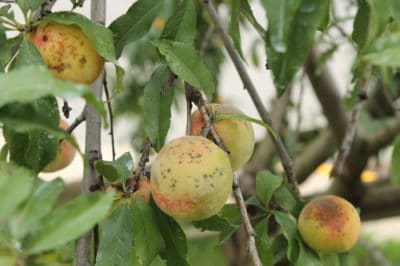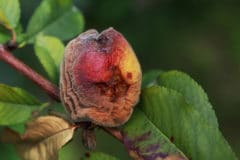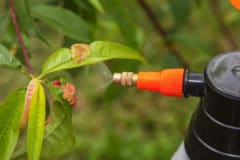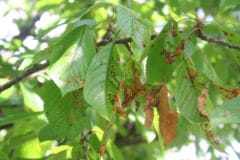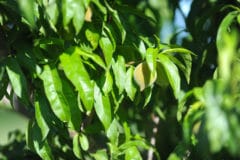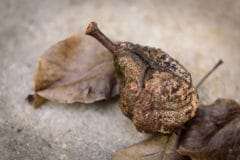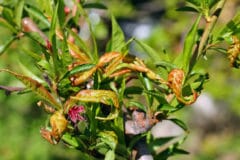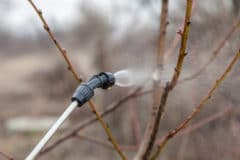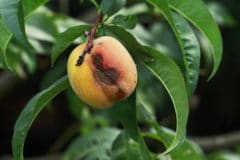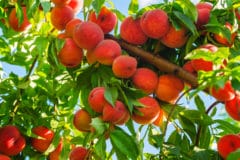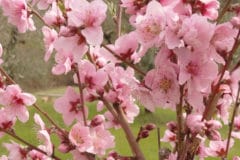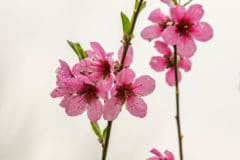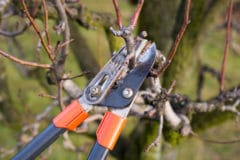Peach Scab Signs and Growing Conditions
The most noticeable symptoms of peach scab are visible when fruit is maturing. Round, greenish spots grow on the stem side of the fruit and where fruit is exposed to the sun. As the spots grow, they turn black and irregular shaped, making the fruit unpalatable.
Spots on the fruit also can develop yellow disks around them as they grow, and the surfaces of the damaged areas are raised with a velvety texture.
Twigs and leaves develop less noticeable lesions. On twigs, lesions are small and reddish-brown, becoming dark. Leaves develop round, yellow-green blisters on the underside, causing some leaves to die and fall off.
The spores of the fungus spread the disease on the tree when air temperatures are between 65º and 75ºF (18º to 24ºC) when there is rain, fog, or moisture from sprinklers or other irrigation. Spores from peach scab overwinter on twigs and branches.
Controlling and Preventing Peach Scab Fungus
So far, there are no varieties of peach trees resistant to the peach scab fungus. The most important methods for preventing this disease in peach trees involve how the tree is planted and cared for as it grows. Chemical fungicide sprays can be used if a tree develops a serious infection, but the current year’s crop can’t be saved by spraying.
To reduce the chances of peach scab, plant peach trees in areas with:
- Good air circulation by avoiding low-lying spots, shady areas, or proximity to other vegetation,
- Well-drained soil,
- Avoiding mist or spray on trees from sprinklers or other sources, especially during critical temperature periods.
Pruning the trees in late winter or early spring helps air circulation outside and inside the canopy, and this can be important for preventing the damp conditions which spread peach scab fungal spores around inside the tree.
Clean-up fallen leaves, clippings, and fruit at the end of the season and dispose of them off-site to reduce overwintering spoors.
If trees become infected, spray them with a fungicide approved for peach scab. Follow all package directions and use protective equipment. Spray once when petals first fall and each two weeks after that until the papery membrane around each fruit begins to split and fall off, a period known as the shuck-split stage of fruit development.
